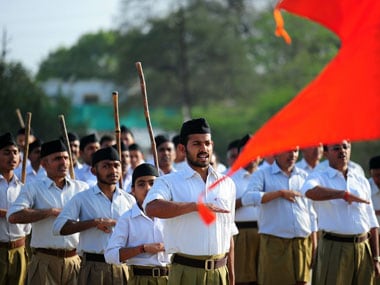The long-standing tussle between the Communist Party of India (Marxist) and the Sangh Parivar in Kerala has taken a new turn with the Left Democratic Front (LDF) government trying to put an end to the latter’s stranglehold over temples in the state. Devaswom Minister Kadakampally Surendran has kicked off the process by initiating steps to restrain the Rashtriya Swayamsevak Sangh (RSS) from using temples for its activities. He alleged that the RSS had converted temples into its shakhas and using them to store arms and provide arms training to its cadres. Though Surendran claims that the proposed action is intended to stop the RSS from driving away true devotees from temples, the real objective is to check the political growth of Bharatiya Janata Party (BJP). The CPM has been trying to counter the Sangh Parivar physically all these years. The physical confrontation between the two has left a long trail of political violence in the state especially in Kannur district — the cradle of communist movement in Kerala. The bloody fight between the two has claimed over 200 lives in the northern district alone in the last two decades. The latest move by the CPM to take the battle to religious front is borne out of the realisation that the RSS was using temples to make inroads into the Hindu vote bank especially after a hard-core RSS leader was brought at the helm of the BJP. The saffron party was able to open its account in the state Assembly for the first time under the leadership Kummanam Rajashekharan, who was elevated as the party chief just before the Assembly elections in May this year. Rajashekharan, who is a product of temple politics, came into limelight after he led a successful agitation against a move by the Christians to build a church at Nilakkal, a Hindu pilgrim centre, in the early 1970s. [caption id=“attachment_2672382” align=“alignleft” width=“380”]  Representational image. AFP[/caption] The RSS had a phenomenal growth under his leadership. With more than 5000 units, Kerala has the maximum number of RSS shakhas in India today. BJP president Amit Shah’s strategy to use this vast network for the growth of BJP led to the elevation of Rajashekharan, who has never been a functionary of the party before. The CPM believes that the RSS was able to grow in a state like Kerala, where the Hindus constitute only 55 percent of the population, by using temples. The restrictions imposed by the party on comrades in associating with religious organisations under its atheistic ideology helped the RSS in taking firm control of temple committees. Though the CPM relaxed the norms and allowed its cadres to associate with the committees they could not break the RSS kinship with the devotees. On the contrary, the party has been witnessing a steady flight of its cadres to the Sangh Parivar. The CPM had tried to woo back the faithful by organising various Hindu festivals. Ironically the Krishna Jayanthi the party celebrated last year under the guise of Onam week celebrations had alienated true comrades from the party. This forced the party to give the celebration this year an ideological colour. The fall of the birth anniversary of Chattambi Swamikal, a late 19th century social reformer, on the Krishna Jayanthi day came handy to the party, which grabbed the opportunity to evolve a campaign based on renaissance ideas that led to several social reforms in the state. The party has sought to carry forward the campaign by using renaissance message to counter the communal forces. Chief Minister Pinarayi Vijayan’s direction to the state government employees not to use the office time for celebrating festivals and Public Works Minister G Sudhakaran’s call to avoid lighting of lamps and prayers at public functions is viewed as part of this move. Health Minister and senior party leader KK Shailaja had earlier questioned inclusion of Sanskrit ‘shloka’ in the schedule of programmes marking the official International Yoga Day celebrations in the state capital on 21 June. How far this will help the CPM in stopping the BJP’s march has to be waited and seen. Political analysts like NN Pearson dismiss this as political gimmicks that will not help the Left in preventing the erosion in its support base. He told the Firstpost that the communist parties had lost their intellectual capacity to pursue renaissance. “How can a party that has diluted its own ideology for the sake of power lead a renaissance campaign? The politically enlightened people of Kerala can see through the games,” says Pearson. “The CPM attempts to oppose lighting of lamps and singing of religious hymns at public functions show the party’s ideological bankruptcy. These are part of the culture that has taken strong roots in the state. Any move to oppose them will only help the BJP in the long run,” says Pearson. Curiously, the BJP has already begun the ground work by terming the moves anti-Hindu. The party president said that the CPM and its ministers were trying to create unnecessary controversy as they were facing an ideological crisis. “Lighting of lamps and offering prayers and functions are part of the Indian tradition. By opposing them, the CPM is trying to impose its ideology on the people. This is cultural fascism,” said Kummanam Rajashekharan. BJP general secretary MT Ramesh has warned serious consequences if anybody tried to intervene in the religious affairs of the people. He has urged the LDF government to withdraw from its moves to challenge the traditions of the land and leave the temples and its affairs to believers.
The latest move by the LDF to take the battle to religious front is borne out of the realisation that the RSS was using temples to make inroads into the Hindu vote bank especially after a hard-core RSS leader was brought at the helm of the BJP.
Advertisement
End of Article


)
)
)
)
)
)
)
)
)



